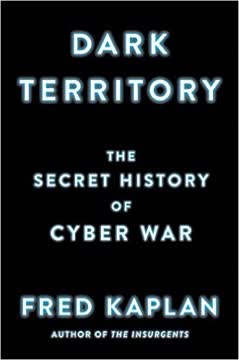Key Takeaways
1. Reagan's "WarGames" Moment Sparked Cyber Warfare Awareness
WarGames, it turned out, wasn’t at all far-fetched.
Movie Prompted Action. President Reagan's viewing of the movie "WarGames" in 1983 led to a pivotal question: Could someone really hack into our most sensitive computers? This query initiated a series of investigations that revealed the alarming vulnerability of U.S. systems, marking the first time an American president addressed what would become known as "cyber warfare."
NSDD-145: A Prescient Directive. The investigations culminated in the National Security Decision Directive 145 (NSDD-145) in 1984. This document, though created before the widespread use of the internet, recognized the susceptibility of new technologies to interception and unauthorized access by hostile foreign intelligence agencies, terrorist groups, and criminal elements.
Short-Lived Commotion. Despite its foresight, NSDD-145 faced opposition due to concerns about the NSA's role in domestic affairs, leading to its eventual revision. This initial spark of awareness faded, only to resurface later, highlighting a recurring pattern of dismissing or forgetting the importance of cyber security until a crisis forced the issue back into the spotlight.
2. Information is the New Battlefield: A Shift in Warfare
The world isn’t run by weapons anymore, or energy, or money,” the Kingsley character says at a frenzied clip. “It’s run by ones and zeroes, little bits of data.
From Bullets to Bytes. The movie "Sneakers" highlighted a crucial shift: information, not traditional weapons, was becoming the dominant force. This concept resonated with military leaders, leading to the formalization of "information warfare" as a key component of military strategy.
Counter-C2 Warfare. The Gulf War showcased the potential of "counter command-control warfare," disrupting Iraqi communications and air defense systems. However, senior officers like General Schwarzkopf initially dismissed the importance of information warfare, clinging to traditional notions of combat.
New Dimensions of Espionage. The cyber age introduced a new dimension to information warfare. Unlike traditional methods of intercepting communications, cyber intrusions allowed attackers to not only gather information but also to alter, disrupt, or destroy it, wreaking havoc remotely and blurring the lines between espionage and warfare.
3. Cyber Vulnerabilities: A Looming "Pearl Harbor"
We have not yet had a terrorist cyber attack on the infrastructure. But I think that that is just a matter of time. We do not want to wait for the cyber equivalent of Pearl Harbor.
Oklahoma City Bombing Catalyst. The Oklahoma City bombing in 1995 prompted a reevaluation of infrastructure vulnerabilities, leading to the realization that cyber attacks could be as devastating as physical ones. This recognition spurred the creation of the President's Commission on Critical Infrastructure Protection.
Critical Infrastructure Interdependence. The commission identified the interconnectedness of critical sectors like telecommunications, energy, and finance, all increasingly reliant on vulnerable computer networks. A coordinated cyber attack could cripple the nation, prompting warnings of a potential "cyber Pearl Harbor."
Defining Cyber Threats. The term "cyber" gained prominence, encompassing cyber crime, cyber security, and cyber war. This new lexicon reflected the growing awareness of the digital realm as a battleground, with threats emanating from criminals, terrorists, and nation-states alike.
4. Eligible Receiver: Exposing the Military's Cyber Weakness
Eligible Receiver revealed that the Defense Department was completely unprepared and defenseless for a cyber attack.
NSA Red Team's Shocking Success. The 1997 exercise "Eligible Receiver" demonstrated the U.S. military's alarming vulnerability to cyber attacks. An NSA Red Team, using only commercially available tools, successfully penetrated the Department of Defense's computer networks, including the National Military Command Center.
Basic Security Lapses. The exercise revealed basic security flaws, such as the absence of passwords or the use of easily guessable ones. Dumpster diving also yielded valuable information, highlighting the lack of awareness and preparedness among military personnel.
Resistance to Change. Despite the alarming results, senior officers initially resisted acknowledging the severity of the threat. This resistance underscored the cultural and bureaucratic challenges in integrating cyber warfare into traditional military thinking.
5. Solar Sunrise and Moonlight Maze: Early Cyber Intrusions
Briefing President Clinton on the intrusion, Hamre warned that Solar Sunrise might be “the first shots of a genuine cyber war,” adding that they may have been fired by Iraq.
Solar Sunrise Misdirection. The Solar Sunrise incident in 1998, initially feared as a state-sponsored attack, turned out to be the work of teenage hackers. This revelation, while relieving, highlighted the ease with which even unsophisticated actors could penetrate military networks.
Moonlight Maze: A Sophisticated Espionage Campaign. The Moonlight Maze intrusions, beginning shortly after Solar Sunrise, revealed a more sophisticated and persistent threat. The hackers, suspected to be linked to Russia, targeted sensitive military research and development data, underscoring the potential for nation-states to conduct cyber espionage.
Challenges in Attribution. Both Solar Sunrise and Moonlight Maze highlighted the difficulties in attributing cyber attacks. The use of proxy servers and obfuscation techniques made it challenging to identify the true source and motives behind the intrusions.
6. The L0pht and Clarke: Bridging the Gap Between Hackers and Policy
Change the law, give me the power, I’ll protect the nation.
Clarke's Cyber Awakening. Richard Clarke, initially focused on counterterrorism, recognized the growing importance of cyber security after the Marsh Commission report. He sought to understand the threat landscape by engaging with the hacker community.
Meeting Mudge and the L0pht. Clarke's meeting with Mudge (Peiter Zatko) and the L0pht, a group of skilled hackers, provided him with a firsthand understanding of the vulnerabilities in computer systems. The L0pht's demonstration of their capabilities challenged conventional threat models and highlighted the need for proactive security measures.
Congressional Testimony and Policy Influence. Clarke facilitated the L0pht's testimony before Congress, raising awareness of cyber security issues among policymakers. This engagement, along with Clarke's advocacy, contributed to the development of new policies and initiatives aimed at protecting critical infrastructure.
7. From Defense to Offense: The Evolution of Cyber Warfare
The important thing, Wilhelm stressed, was that our cyber offensive capabilities must be kept off the table—must not even be hinted at—when discussing our vulnerability to other countries’ cyber offensive capabilities.
Wilhelm's Warning. As the US began to develop cyber offensive capabilities, Rich Wilhelm stressed the importance of also protecting the nation from other countries' efforts to gain the same advantage. Information warfare wasn’t just about gaining an advantage in combat; it also had to be about protecting the nation from other countries’ efforts to gain the same advantage.
Counter-C2 Warfare. The concept of "counter command-control warfare" evolved into "information warfare," encompassing both offensive and defensive strategies. This shift recognized the potential to not only disrupt enemy communications but also to manipulate and control their information systems.
Ethical Considerations. The development of cyber offensive capabilities raised ethical and legal questions. The potential for collateral damage and the blurring of lines between espionage and warfare prompted debates about the appropriate use of these new weapons.
8. Stuxnet: The Dawn of Cyber Sabotage
The world isn’t run by weapons anymore, or energy, or money,” the Kingsley character says at a frenzied clip. “It’s run by ones and zeroes, little bits of data.
Olympic Games. The Stuxnet worm, part of Operation Olympic Games, marked a turning point in cyber warfare. This sophisticated malware targeted Iran's Natanz nuclear facility, causing physical damage to its centrifuges and setting back its nuclear program.
Zero-Day Exploits. Stuxnet exploited previously unknown vulnerabilities in Siemens software, highlighting the value of "zero-day exploits" in cyber attacks. The worm's complexity and precision demonstrated the capabilities of nation-states in conducting targeted cyber sabotage.
Ethical and Strategic Implications. Stuxnet raised concerns about the potential for escalation and the blurring of lines between espionage and warfare. The attack also prompted other nations to develop their own cyber weapons, contributing to a global arms race in cyberspace.
9. Snowden's Revelations: Unveiling the Scope of Surveillance
The world isn’t run by weapons anymore, or energy, or money,” the Kingsley character says at a frenzied clip. “It’s run by ones and zeroes, little bits of data.
Snowden's Leaks. Edward Snowden's disclosures in 2013 revealed the vast scope of NSA surveillance programs, including the bulk collection of telephone metadata and the PRISM program. These revelations sparked a global debate about the balance between national security and individual privacy.
Public Distrust. The Snowden leaks eroded public trust in the NSA and prompted concerns about government overreach. The disclosures also strained relationships with allied governments, who were angered by the extent of U.S. surveillance activities.
Legislative and Policy Reforms. The Snowden revelations led to legislative and policy reforms aimed at increasing transparency and oversight of NSA surveillance programs. These reforms sought to address concerns about privacy and civil liberties while preserving the agency's ability to gather intelligence.
10. The Inherent Insecurity of Cyber Space: A Dark Territory
We’re wandering in dark territory.
The Internet of Things. The proliferation of internet-connected devices, from toasters to cars, has expanded the attack surface for cyber threats. The "Internet of Things" presents new challenges for security, as vulnerabilities in everyday devices can be exploited to launch large-scale attacks.
Lack of International Norms. The absence of clear international norms and agreements governing cyber warfare creates a "dark territory" where the rules of engagement are undefined. This lack of regulation increases the risk of miscalculation and escalation in cyber conflicts.
The Need for a New Approach. The inherent insecurity of cyberspace requires a shift in thinking, from a focus on perimeter defense to a strategy of resilience and deterrence. This approach emphasizes the importance of detecting attacks early, minimizing damage, and deterring adversaries through a combination of defensive and offensive capabilities.
Last updated:
FAQ
What is Dark Territory: The Secret History of Cyber War by Fred Kaplan about?
- Comprehensive cyber war history: The book traces the evolution of cyber warfare from its Cold War origins to the present, highlighting key events, technologies, and personalities.
- Focus on U.S. operations: Kaplan details how U.S. presidents, military leaders, and intelligence agencies have grappled with the challenges and opportunities of cyber warfare.
- Interplay of secrecy and policy: The narrative explores the tension between national security, civil liberties, and the secretive nature of cyber operations.
- Emergence of a new domain: It shows how cyber war has become a central element of modern military and intelligence strategy.
Why should I read Dark Territory by Fred Kaplan?
- Reveals hidden history: The book uncovers decades of secret cyber operations and policies, providing a rare inside look at the development of cyber warfare.
- Accessible explanations: Kaplan breaks down complex technical and policy issues, making them understandable for readers without a technical background.
- Relevance to current events: With cyber attacks becoming more frequent and sophisticated, the book provides essential context for understanding ongoing cyber conflicts.
- Insight into national security: Readers gain perspective on the vulnerabilities of critical infrastructure and the challenges of defending against cyber attacks.
What are the key takeaways from Dark Territory: The Secret History of Cyber War by Fred Kaplan?
- Cyber warfare as a new domain: Cyber operations are now as critical as traditional military domains, involving espionage, sabotage, and direct attacks on infrastructure.
- Widespread vulnerabilities: Both military and civilian networks are highly susceptible to cyber attacks, with potentially strategic or economic consequences.
- Secrecy and bureaucracy hinder progress: The secretive nature of cyber programs and interagency rivalries have slowed effective policy and operational responses.
- Public-private cooperation is essential: Securing critical infrastructure requires collaboration between government and industry, complicated by differing priorities and trust issues.
What are the most important events in cyber warfare history covered in Dark Territory by Fred Kaplan?
- Reagan’s WarGames moment and NSDD-145: Reagan’s concern after watching WarGames led to the first U.S. national policy on computer security.
- Operation Desert Storm and cyber elements: The Gulf War saw the first use of cyber tactics to disrupt enemy communications.
- Solar Sunrise, Moonlight Maze, and Eligible Receiver: These incidents exposed vulnerabilities in U.S. military networks and prompted the creation of dedicated cyber defense units.
- Stuxnet and Operation Buckshot Yankee: The Stuxnet attack on Iran and the Buckshot Yankee breach marked turning points in offensive and defensive cyber operations.
How does Fred Kaplan define and explain key cyber warfare concepts like CNE, CNA, and metadata collection in Dark Territory?
- Computer Network Exploitation (CNE): CNE involves finding and exploiting vulnerabilities in adversary networks to gather intelligence or prepare for attacks, often blurring the line between offense and defense.
- Computer Network Attack (CNA): CNA refers to using cyber tools to disrupt, degrade, or destroy information systems, typically requiring high-level authorization.
- Metadata collection: The NSA’s collection of metadata (data about communications, not content) aimed to identify threats but raised significant privacy concerns.
- Technical and legal challenges: Kaplan explains how these concepts are central to modern cyber operations and the legal debates surrounding them.
What is the significance of NSDD-145 in the history of cyber warfare according to Dark Territory by Fred Kaplan?
- First national cyber security policy: NSDD-145, signed in 1984, was the first presidential directive addressing computer and telecommunications security.
- NSA’s expanded role: The directive placed the NSA in charge of securing all U.S. computer networks, sparking civil liberties concerns and congressional pushback.
- Foundation for future policy: Although initially controversial, NSDD-145 set the stage for later cyber security initiatives and highlighted the growing importance of cyber threats.
- Recognition of new vulnerabilities: It marked the official acknowledgment of the risks posed by emerging computer networks.
How did the NSA and U.S. Cyber Command evolve, as described in Dark Territory by Fred Kaplan?
- NSA’s growing dominance: Under leaders like Keith Alexander, the NSA consolidated cyber capabilities, becoming the central hub for intelligence gathering and cyber operations.
- Creation of U.S. Cyber Command: Incidents like Operation Buckshot Yankee prompted the establishment of Cyber Command in 2009, often led by the NSA director.
- Civilian infrastructure protection challenges: The Department of Homeland Security struggled to protect civilian networks, leading to complex arrangements with the NSA.
- Ongoing authority and privacy tensions: The evolution of these agencies reflects ongoing debates over control, expertise, and civil liberties.
What was Operation Buckshot Yankee and why is it important in Dark Territory by Fred Kaplan?
- First major breach of classified networks: In 2008, a malware-infected thumb drive introduced the agent.btz worm into U.S. Central Command’s classified network.
- Demonstrated new vulnerabilities: The incident bypassed supposed "air gaps," signaling a new era of cyber threats to military systems.
- NSA’s rapid response: The NSA quickly developed a solution to reroute the malware’s beacon, showcasing its technical prowess.
- Catalyst for Cyber Command: The breach exposed bureaucratic confusion and accelerated the creation of U.S. Cyber Command.
What is the story and significance of the Stuxnet cyber attack as detailed in Dark Territory by Fred Kaplan?
- Covert sabotage of Iran’s nuclear program: Stuxnet was a sophisticated worm designed by the NSA, CIA, and Israel’s Unit 8200 to physically destroy Iranian centrifuges.
- Technical innovation: The worm exploited multiple zero-day vulnerabilities and hid its presence by feeding false data to monitoring systems.
- Global impact: Its discovery by security firms revealed the existence of cyber weapons capable of causing physical destruction.
- Set a precedent: Stuxnet marked the first known use of a cyber weapon for physical sabotage, sparking a cyber arms race.
How does Dark Territory by Fred Kaplan describe the NSA’s metadata collection and its controversies?
- Massive data collection: The NSA collected vast amounts of metadata under laws like the Patriot Act, aiming to track terrorist communications.
- Privacy and oversight concerns: The program raised alarms about mass surveillance and the redefinition of "collection" to circumvent legal restrictions.
- Snowden leaks and public trust: Edward Snowden’s disclosures exposed the scale and secrecy of these operations, leading to widespread debate.
- Reforms and recommendations: A presidential commission recommended reforms, including moving metadata storage to telecom companies and increasing oversight.
What role did China’s cyber activities play in the narrative of Dark Territory by Fred Kaplan?
- Extensive cyber espionage: China’s PLA Unit 61398 was responsible for numerous cyber intrusions targeting U.S. defense contractors and critical infrastructure.
- Intellectual property theft: The book highlights China’s large-scale theft of intellectual property and sensitive data, often undetected for years.
- Diplomatic tensions: Public exposure of China’s activities complicated U.S.-China relations and prompted calls for international norms.
- Debate over espionage vs. theft: Kaplan discusses the blurred lines between acceptable espionage and economic cyber theft.
What are the implications of cyber attacks on private companies and critical infrastructure in Dark Territory by Fred Kaplan?
- Increasingly frequent and sophisticated attacks: High-profile incidents like those on Las Vegas Sands and Sony Pictures show that private sector entities are prime targets.
- Vulnerabilities in the private sector: Many companies lack adequate cybersecurity resources, making them soft targets and complicating national defense efforts.
- Challenges in government-industry cooperation: Voluntary information-sharing initiatives often face resistance due to fears of regulation and liability.
- Critical infrastructure at risk: The book emphasizes the need for better collaboration to protect essential services like power grids and financial systems.
Review Summary
Dark Territory is a comprehensive history of US cyber warfare and security efforts. Readers found it informative but sometimes dry and disorganized. The book covers key events, bureaucratic struggles, and policy developments from the 1980s to 2015. While praised for its detailed insider perspective, some felt it focused too heavily on US government processes rather than technical aspects of cyber warfare. Many readers appreciated learning about the vulnerabilities and challenges in cybersecurity, though some wanted more analysis of future implications.
Similar Books
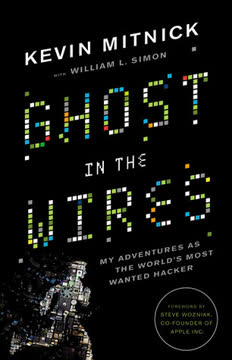


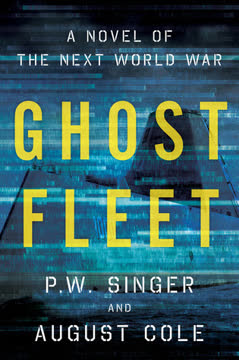
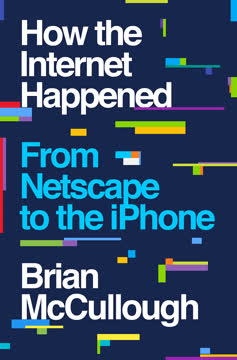
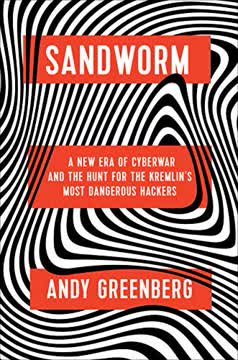
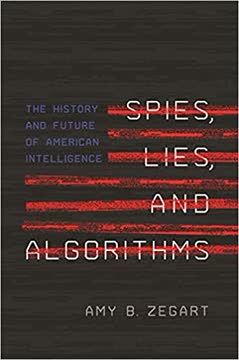
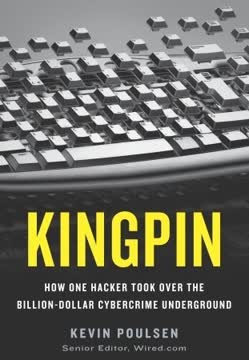
Download PDF
Download EPUB
.epub digital book format is ideal for reading ebooks on phones, tablets, and e-readers.
